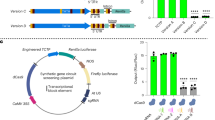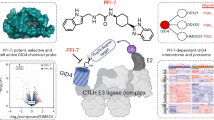Abstract
A soybean cDNA encoding the small subunit peptide of a cotyledon-specific 2S albumin (Gm2S-1) is thought to play a role in arresting mitosis during the DNA endoreduplication and cell expansion phase of seed development. The peptide (termed lunasin) contains the cell adhesion motif Arg-Gly-Asp (RGD) followed by eight aspartic acid residues at its C-terminal end. A chimeric gene encoding the lunasin peptide tagged with green fluorescent protein (GFP) arrested cell division, caused abnormal spindle fiber elongation, chromosomal fragmentation, and cell lysis when transiently transfected into murine embryo fibroblast, murine hepatoma, and human breast cancer cells. Deletion of the polyaspartyl end abolished the antimitotic effect. Subcellular localization of lunasin and immunobinding assay using synthetic peptides revealed the preferential adherence of lunasin to chromatin. Immunofluorescence showed that kinetochore proteins were displaced from the centromere in lunasin-transfected cells. These observations suggest that lunasin binds to the chromatin, leading to disruption of kinetochore formation and inhibition of mitosis.
This is a preview of subscription content, access via your institution
Access options
Subscribe to this journal
Receive 12 print issues and online access
$209.00 per year
only $17.42 per issue
Buy this article
- Purchase on Springer Link
- Instant access to full article PDF
Prices may be subject to local taxes which are calculated during checkout






Similar content being viewed by others
References
Spencer, D. & Higgins, T.J.V. in Commentaries in Plant Science Vol. 2 (ed. Smith, H.) 175–189 (Pergamon Press, New York, 1981).
Schweizer, L., Yerk-Davis, G.L., Phillips, R.L., Srienc, F. & Jones, R.J. Dynamics of maize endosperm development and DNA endoreduplication. Proc. Natl. Acad. Sci. USA 92, 7070–7074 (1995).
Hauxwell, A.J., Corke, F.M.K., Hedley, C.L. & Wang, L. Storage protein gene expression is localized to regions lacking mitotic activity in developing pea embryos: an analysis of seed development in Pisum sativum XIV. Development 110, 283–289 (1990).
da Silva Conceicao, A. & Krebbers, E. A cotyledon regulatory region is responsible for the different spatial expression patterns of Arabidopsis 2S albumin genes. Plant J. 5, 493–505 (1994).
Galvez, A.F., Revilleza, M.J.R. & de Lumen, B.O. A novel methionine-rich protein from soybean cotyledon: cloning and characterization of a cDNA (Accession No. AF005030) Plant Gene Register #PGR97-103. Plant Physiol. 114, 1567 (1997).
Odani, S., Koide, T. & Ono, T. Amino acid sequence of a soybean (Glycine max) seed polypeptide having a poly(L-aspartic acid) structure. J. Biol. Chem. 262, 10502 –10505 (1987).
Goldberg, R., de Paiva, G. & Yadegari, R. Plant embryogenesis: zygote to seed. Science 266, 605–614 (1994).
Kennedy, A.R. The evidence for soybean products as cancer preventive agents. J. Nutr. 125, 733S–743S (1995).
Erickson, H.P. FtsZ, a tubulin homologue in prokaryote cell division. Trends Cell. Biol. 7, 362–367 (1997).
Margolin, W., Wang, R. & Kumar, M. Isolation of an FtsZ homolog from the Archaebacterium Halobacterium salinarum: implications for the evolution of FtsZ and tubulin. J. Bacteriol. 178, 1320–1327 (1996).
Ben-Sasson, S.A., Sherman, Y. & Gavrieli, Y. Identification of dying cells—in situ staining. Methods Cell. Biol. 46, 29– 39 (1995).
Wilson, L. & Jordan, M.A. in Microtubules (eds. Hyams, J. & Lloyd, C.) 59–84 (Wiley-Liss Inc., New York, 1994).
Zinkowski, R.P., Meyne, J. & Brinkley, B.R. The centromere-kinetochore complex: a repeat subunit model. J. Cell. Biol. 113, 1091– 1110 (1991).
Rowinsky, E.K., Casenave, L.H. & Donehower, R.C. Taxol: a novel investigational antimicrotubule agent. J. Natl. Cancer Inst. 82, 1247– 1259 (1990).
Earnshaw, W.C. Anionic regions in nuclear proteins. J. Cell. Biol. 105, 1479–1482 (1987).
Goodwin, G.H., Walker, J.M. & Johns, E.W. in The Cell Nucleus Vol.VI. (ed. Busch, H.) 181–219 (Academic, New York, 1978).
Liu, L.F. & Miller, K.G. Eukaryotic DNA topoisomerases: two forms of type I DNA topoisomerases from HeLa cell nuclei. Proc. Natl. Acad. Sci. USA 78, 3487– 3491 (1981).
Eisenman, R.N., Tachibana, C.Y., Abrams, H.D. & Hann, S.R. v-myc and c-myc-encoded proteins are associated with the nuclear matrix. Mol. Cell. Biol. 5, 114–126 (1985).
Hecht, A., Laroche, T., Strahl-Bolsinger, S., Gasser, S.M. & Grunstein, M. Histone H3 and H4 N-termini interact with SIR3 and SIR4 proteins: a molecular model for the formation of heterochromatin in yeast. Cell 80, 583– 592 (1995).
Luger, K., Mader, A.W., Richmond, R.K., Sargent, D.F. & Richmond, T.J. Crystal structure of the nucleosome core particle at 2.8 Å resolution. Nature 389 , 251–260 (1997).
Earnshaw, W.C. et al. Molecular cloning of cDNA for CENP-B, the major human centromere autoantigen. J. Cell. Biol. 104, 817– 829 (1987).
Earnshaw, W.C., Halligan, N., Cooke, C.A. & Rothfield, N.F. The kinetochore is part of the metaphase chromosome scaffold. J. Cell. Biol. 98, 352–357 (1984).
Pluta, A.F., Cooke, C.A. & Earnshaw, W.C. Structure of the human centromere at metaphase. Trends Biochem. Sci. 15, 181–185 (1990).
Lee, J.K., Huberman, J.A. & Hurwitz, J. Purification and characterization of a CENP-B homologue protein that binds to the centromeric K-type repeat DNA of Schizosaccharomyces pombe. Proc. Natl. Acad. Sci. USA 94, 8427–8432 (1997).
Chen, R.C., Waters, J.C., Salmon, E.D. & Murray, A.W. Association of spindle assembly checkpoint component XMAD2 with unattached kinetochores. Science 274, 242– 246 (1996).
Li, Y. & Benezra, R. Identification of a human mitotic checkpoint gene: hsMAD2. Science 274, 246–248 (1996).
Ruoslahti, E. & Pierschbacher, M.D. Arg-gly-asp: a versatile cell recognition signal. Cell 44, 517– 519 (1986).
Akiyama, S.K., Olden, K. & Yamada, K.M. Fibronectin and integrins in invasion and metastasis. Cancer Metastasis Rev. 14, 173– 189 (1995).
Rowinsky, E.K., Casenave, L.H. & Donehower, R.C. Taxol: a novel investigational antimicrotubule agent. J. Natl. Cancer Inst. 82, 1247– 1259 (1990).
Maniatis, T., Fritsch, E.F. & Sambrook, J. in Molecular Cloning 368– 369 (Cold Spring Harbor Laboratory Press, Cold Spring Harbor, New York, 1982).
Ulitzur, N., Humbert, M. & Pfeffer, S.R. Mapmodulin: a possible modulator of the interaction of microtubule-associated proteins with microtubules. Proc. Natl. Acad. Sci. USA 94, 5084–5089 (1997).
Acknowledgements
We thank L. Bjeldanes, J. Riby, and G.H. Chang (Division of Nutritional Sciences and Toxicology, University of California at Berkeley [UCB]) for the cancer cell lines and the technical support in the transfection experiments; S. Ruzin and D. Schichnes (Center for Biological Imaging, UCB) for the microscopy and imaging assistance; P. Schow (Cancer Research Lab, UCB) for the technical help in flow cytometry and cell cycle analyses; H. Stotz (Department of Biological Sciences, Stanford University) for the technical advice on tubulin indirect immunofluorescence; B.R. Brinkley and R-H. Chen for generously providing the CREST and XMAD2 antibodies, respectively; W. Lei, R. Cho, V. Gurtu, Y. Lam, N. Duldulao, and C. Malacaman for their technical help; D.C. Krenz, I. Atkinson, and M.J. Revilleza for helpful discussions; and S. Nandi (Cancer Research Lab, UCB), Bob Buchanan (Department of Plant Biology, UCB), and L. Bjeldanes for critical review of the manuscript.
Author information
Authors and Affiliations
Corresponding author
Rights and permissions
About this article
Cite this article
Galvez, A., de Lumen, B. A soybean cDNA encoding a chromatin-binding peptide inhibits mitosis of mammalian cells. Nat Biotechnol 17, 495–500 (1999). https://doi.org/10.1038/8676
Received:
Accepted:
Issue Date:
DOI: https://doi.org/10.1038/8676
This article is cited by
-
Novel Method for the Production, Purification, and Characterization of Recombinant Lunasin: Identification of Disulfide Cross-Linked Dimers
International Journal of Peptide Research and Therapeutics (2022)
-
Health Applications of Soy Protein Hydrolysates
International Journal of Peptide Research and Therapeutics (2020)
-
Bioactive peptide with antioxidant and anticancer activities from black soybean [Glycine max (L.) Merr.] byproduct: isolation, identification and molecular docking study
European Food Research and Technology (2019)
-
A soy protein Lunasin can ameliorate amyloid-beta 42 mediated neurodegeneration in Drosophila eye
Scientific Reports (2018)
-
Aureobasidium pullulans produced β-glucan is effective to enhance Kurosengoku soybean extract induced Thrombospondin-1 expression
Scientific Reports (2017)



